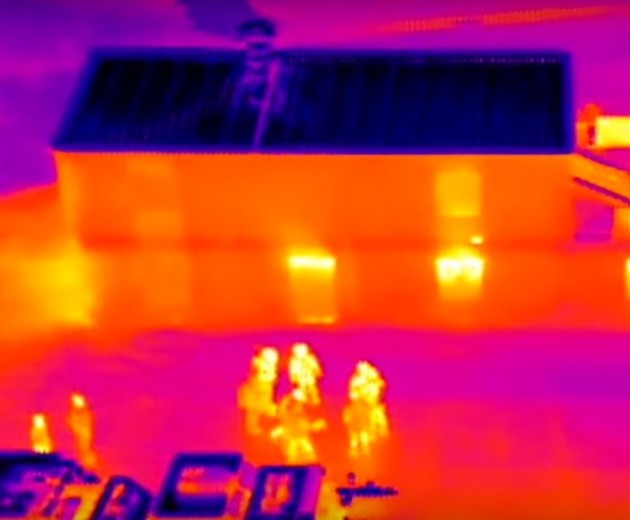
One of the world’s best-known drone manufacturers, DJI, has partnered with one of the world’s best-known infrared imaging companies, FLIR Systems, to create thermal-imaging cameras for aerial vehicles.
But don’t expect to take your DJI Phantom out for night-vision flights anytime soon: These cameras are designed for higher-end drones and specialized applications. And besides, the Federal Aviation Administration hasn’t cleared drones for routine nighttime flying.

The cameras coming out of the collaboration between China-based DJI and Oregon-based FLIR are more likely to be used during the day – for example, to help firefighters see through smoke, to help farmers monitor crop health from above, or to assist in search-and-rescue operations. Infrared imaging is particularly well-suited for those applications, day or night.
And sure, if law enforcement agents are looking for the bad guys after dark, thermal-imaging drones can come in handy. Night-vision aerial imagery, conducted using a camera-equipped helicopter, played a crucial role in capturing Boston Marathon bomber Dzhokhar Tsarnaev.
The first thermal imager to come out of the DJI-FLIR collaboration is the Zenmuse XT, which will provide false-color video imagery at resolutions ranging up to 640×512. The camera is designed to be compatible with the DJI Inspire 1 and Matrice M100 platforms, and will go on sale in the first quarter of 2016. Although the price hasn’t yet been revealed, the drones it’ll be attached to cost in the range of $2,700 to $3,500 and up.
Check out this DJI news release and this YouTube video about the collaboration.
Will drones with thermal-imaging cameras fill the night sky? Probably not anytime soon: The FAA’s proposed rules for commercial drone operations generally rule out flying in the dark, but the agency has been known to give emergency approvals for flying drones under unusual circumstances, particularly for search-and-rescue and firefighting operations.
The final version of the commercial drone rules is expected to come out late next spring, and the FAA’s guidelines for registering recreational drones should be out even sooner – as in later this month.
Update for noon PT Dec. 11: Emily Kitts, public relations coordinator for FLIR Systems in Wilsonville, Ore., provided further details about drones do’s and don’ts in an email:
“It’s safe to say that without a waiver, a farmer would not be able to operate his drone at night. He would need to obtain special permission. Public safety operations (search and rescue, fire, etc.) typically have waivers written into their certifications, allowing them to operate drones at night. That being said, it’s important to note that thermal can be used just as effectively in the daytime as in the night. “



